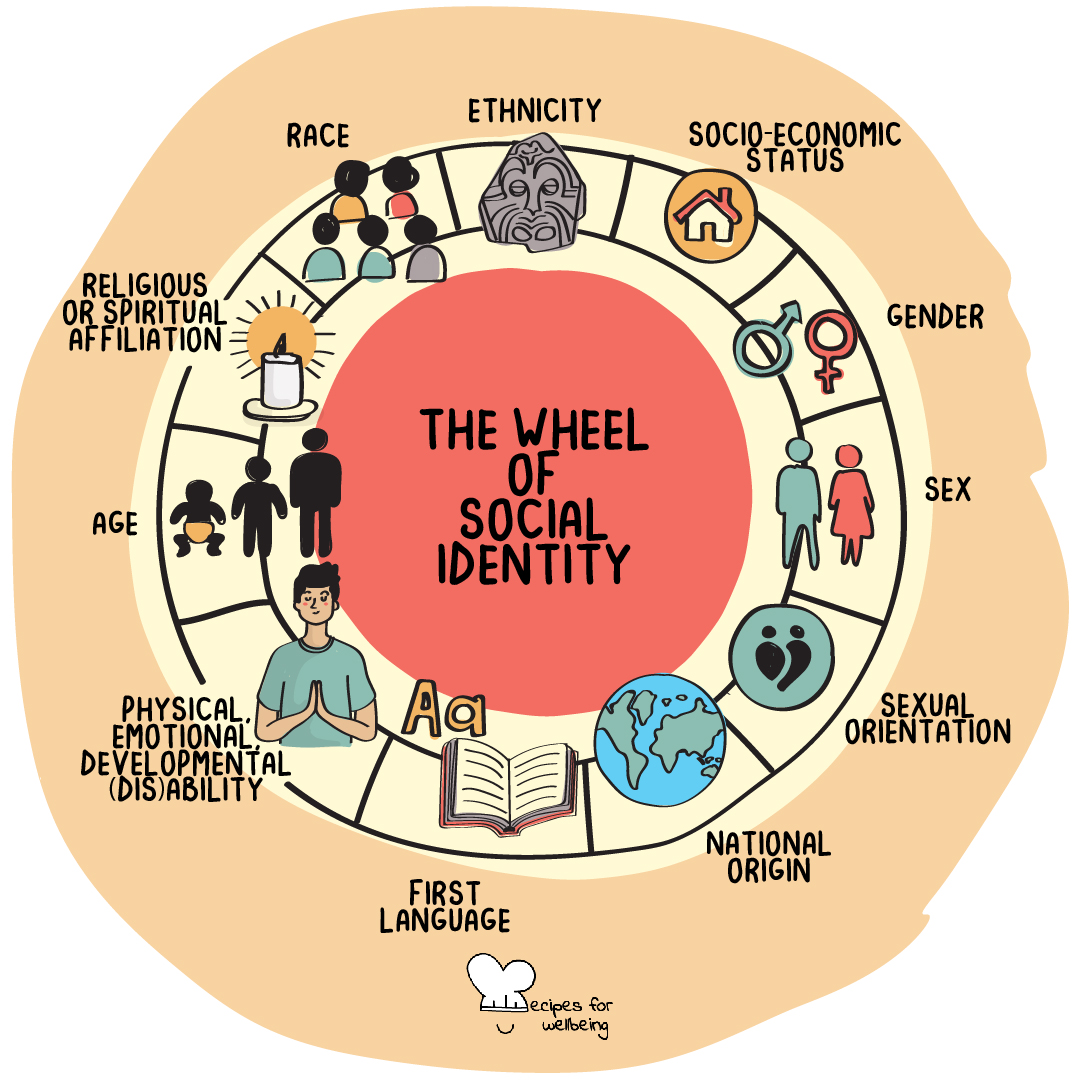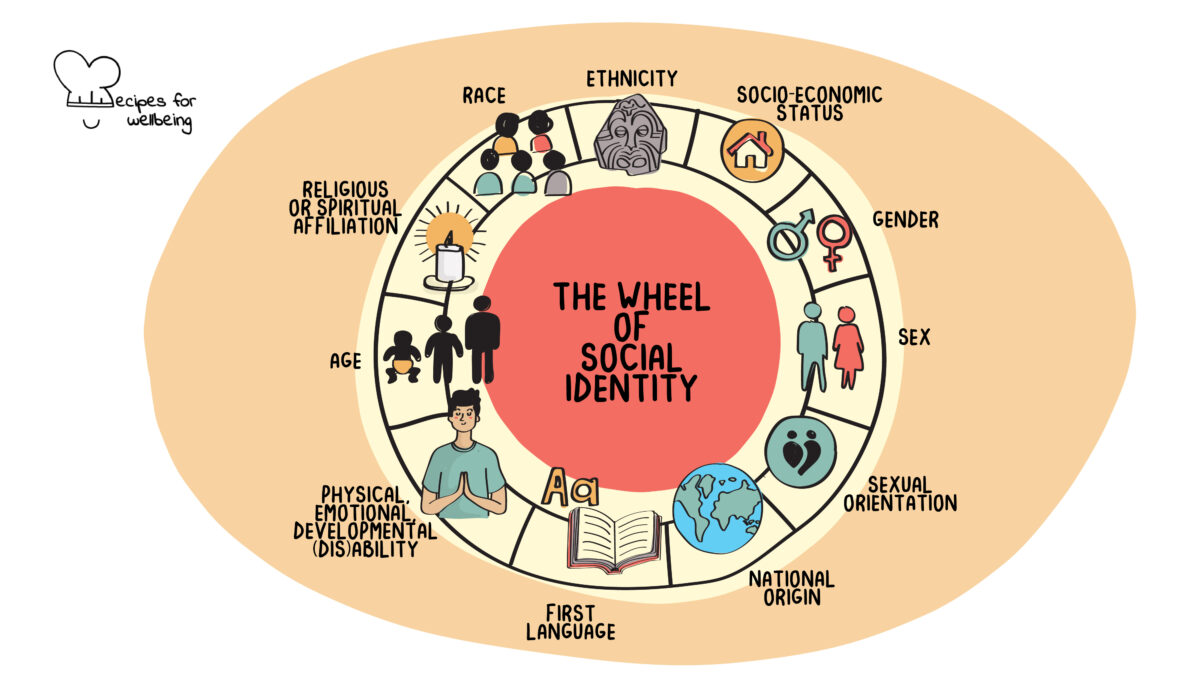
The wheel of social identity
To be yourself in a world that is constantly trying to make you something else is the greatest accomplishment. ―Ralph Waldo Emerson
 Serves: 11-25 people, 2-10 people
Serves: 11-25 people, 2-10 people
 Difficulty: Medium
Difficulty: Medium
 Total time: 31-60 minutes
Total time: 31-60 minutes
 Ingredients: A group of people, 1 wheel of social identity template per participant, 1 pen per participant
Ingredients: A group of people, 1 wheel of social identity template per participant, 1 pen per participant
 Wholebeing Domains: Awareness, Community, Liberatory Learning, Radical Care
Wholebeing Domains: Awareness, Community, Liberatory Learning, Radical Care
 Wholebeing Skills: Acknowledgement, Allyship, Diversity, Holding space, Liberation, Multiperspectivity, Openness, Trust
Wholebeing Skills: Acknowledgement, Allyship, Diversity, Holding space, Liberation, Multiperspectivity, Openness, Trust

The wheel of social identity
 Description
Description
Mapping visible and invisible social identities.
The wheel of social identity is an awareness-raising practice for groups (or teams in an organisation) to recognise different social identities and how these have an impact on how others perceive or treat them. It is a powerful tool to help groups consider their identities and how these are perceived in different social contexts. It also sheds light on the topic of privilege, in particular how privilege normalised certain identities over others. Finally, it boosts compassion and empathy towards others, enhancing feelings of group cohesion and community.
This activity requires thorough facilitation, and should not be conducted carelessly or lightly. It could be facilitated before our recipe “The wheel of power and privilege” which goes deeper into mapping marginalisation in an intersectional way. This recipe has been adapted from University of Michigan LSA Inclusive Teaching.
 Steps
Steps
Step 1 – Preparation (5’)
Set up a private space where you won’t be disturbed. We suggest creating several small circles with 4–5 chairs (or cushions if your group is used to sitting on the floor). When participants arrive, invite them to find a seat in one of the small circles (or, if your group tends to have sub-groups that are not diverse, you may want to re-create the groups so they are more mixed). Frame the activity by using the information provided in the description. Then, hand out a wheel of social identity template per participant.
Step 2 – Review (10’)
Invite the groups to first read page 2 of the template, which offers a short explanation of what “social identity groups” are. This is important to ensure there is a shared understanding among your participants. Be available to answer any questions that might arise, e.g. don’t assume your participants know the difference between the terms “sex” and “gender”.
Step 3 – Group reflection (15’–30’)
Now invite each group to answer the five questions at the centre of the wheel (first page):
- What identities do you think about most often?
- What identities do you think about least often?
- What identities would you like to learn more about?
- What identities have the strongest effect on how you perceive yourself?
- What identities have the greatest effect on how others perceive you?
Suggest that they first take a few minutes to reflect individually before sharing their answers in their small group. Remind them that disclosure in verbal or written form is voluntary – if someone wishes not to talk about more vulnerable aspects of their identities, it is okay.
Step 4 – Debrief (15’)
Invite participants to break their small group formation and join you in a large circle so everyone can see everyone else. Open a space to debrief on the activity. Here are a few guiding prompts:
- What did I learn about my (or other people’s) identities?
- What is the value of critically reflecting on our identities?


 Arabic
Arabic Chinese (Simplified)
Chinese (Simplified) Dutch
Dutch English
English French
French German
German Italian
Italian Portuguese
Portuguese Russian
Russian Spanish
Spanish